 Search by Keyword
|
“IT WON’T BE LONG”
(John Lennon – Paul McCartney)
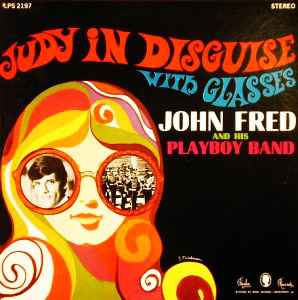 The pressure of songwriting can be tremendous when your aim is to extend a successful career. The list of "one hit wonders" of the '50s and '60s is extensive, and this trend has multiplied to monumental proportions as time has passed. Having a big hit on the charts is a thrill, and is for most artists a once-in-a-lifetime experience. The trick is to perpetuate a reputation as musicians or songwriters so that your latest release will be accepted with open arms even before it is heard. To reach that state, though, you need to prove yourself. The pressure of songwriting can be tremendous when your aim is to extend a successful career. The list of "one hit wonders" of the '50s and '60s is extensive, and this trend has multiplied to monumental proportions as time has passed. Having a big hit on the charts is a thrill, and is for most artists a once-in-a-lifetime experience. The trick is to perpetuate a reputation as musicians or songwriters so that your latest release will be accepted with open arms even before it is heard. To reach that state, though, you need to prove yourself.
 Within a year's time, The Beatles had already proven themselves. They achieved their first British #1 (on most of the British charts) with their second single “Please Please Me” in February of 1963. They followed this up with “From Me To You,” which shot to #1 in Britain for an amazing seven weeks throughout May and June of 1963. Then came the infectious pop anthem “She Loves You,” which also reached #1, and broke all sales records in Britain by selling 1.3 million copies. Within a year's time, The Beatles had already proven themselves. They achieved their first British #1 (on most of the British charts) with their second single “Please Please Me” in February of 1963. They followed this up with “From Me To You,” which shot to #1 in Britain for an amazing seven weeks throughout May and June of 1963. Then came the infectious pop anthem “She Loves You,” which also reached #1, and broke all sales records in Britain by selling 1.3 million copies.
It was becoming quite apparent to the Lennon / McCartney songwriting team that having to continually "top" their last success was a daunting task. The pressure was indeed on.
 British "She Loves You" single
|
Songwriting History
 In July of 1963, shortly after the song “She Loves You” was recorded, John Lennon’s wheels were turning as to what would be the follow up single. He came up with the chorus of a new song that utilized the repeating of the word “yeah” as “She Loves You” had done, figuring that their fans would latch on to that gimmick once that fourth British single was released. His "sixth sense" was correct, as the phrase “yeah, yeah, yeah” became the catchword phrase in the autumn of 1963. In July of 1963, shortly after the song “She Loves You” was recorded, John Lennon’s wheels were turning as to what would be the follow up single. He came up with the chorus of a new song that utilized the repeating of the word “yeah” as “She Loves You” had done, figuring that their fans would latch on to that gimmick once that fourth British single was released. His "sixth sense" was correct, as the phrase “yeah, yeah, yeah” became the catchword phrase in the autumn of 1963.
 Contained in the chorus of this new song was wordplay that both Lennon and McCartney liked to throw in to their lyrics to make things interesting. The song “Please Please Me” contained the double use of the word “please,” using it as a request and then an action. In this case, Lennon used the phrase “be long” specifying an amount of time, with “belong” as to ownership. In his 1997 book "Many Years From Now," Paul McCartney explained this interest in wordplay, “I was doing literature at school, so I was interested in plays on words and onomatopoeia. John didn’t do literature but he was quite well read, so he was interested in that kind of thing.” Concerning this song, Paul continues “we both liked to try and get a bit of double meaning in, so that was the high spot of writing that particular song...We'd spot the double meaning. I think everyone did, by the way, it was not just the genius of us!” Contained in the chorus of this new song was wordplay that both Lennon and McCartney liked to throw in to their lyrics to make things interesting. The song “Please Please Me” contained the double use of the word “please,” using it as a request and then an action. In this case, Lennon used the phrase “be long” specifying an amount of time, with “belong” as to ownership. In his 1997 book "Many Years From Now," Paul McCartney explained this interest in wordplay, “I was doing literature at school, so I was interested in plays on words and onomatopoeia. John didn’t do literature but he was quite well read, so he was interested in that kind of thing.” Concerning this song, Paul continues “we both liked to try and get a bit of double meaning in, so that was the high spot of writing that particular song...We'd spot the double meaning. I think everyone did, by the way, it was not just the genius of us!”
 The occurrence of lyrical double meanings can be spotted throughout the Lennon / McCartney catalog. In the song “You Won’t See Me,” that phrase meant that his girlfriend was too busy to give him any attention, but in the second verse it meant that if he would “turn away” she literally wouldn’t be able to see him. In “Good Morning Good Morning,” a more subtle play on words can be spotted in the similar sounding words of the verse “somebody needs to know the time; glad that I’m here.” These little tricks became a habit and created a fun exercise for Beatles fans to discover. The occurrence of lyrical double meanings can be spotted throughout the Lennon / McCartney catalog. In the song “You Won’t See Me,” that phrase meant that his girlfriend was too busy to give him any attention, but in the second verse it meant that if he would “turn away” she literally wouldn’t be able to see him. In “Good Morning Good Morning,” a more subtle play on words can be spotted in the similar sounding words of the verse “somebody needs to know the time; glad that I’m here.” These little tricks became a habit and created a fun exercise for Beatles fans to discover.
 Despite John's insistance in an interview with David Sheff from Playboy magazine in 1980 that "'It Won't Be Long' was mine...my attempt at writing another single," it was at a writing session with McCartney in July of 1963 that John introduced the newly written chorus of “It Won’t Be Long” to his collaborator with the specific intention of working it out with him. McCartney recalls, “John mainly sang it so I expect that it was his original idea but we both sat down and wrote it together.” With their intention of writing a follow up single to the yet unreleased “She Loves You,” they put together an impressive package of verses and bridges in an unusual configuration with the already written chorus. Despite John's insistance in an interview with David Sheff from Playboy magazine in 1980 that "'It Won't Be Long' was mine...my attempt at writing another single," it was at a writing session with McCartney in July of 1963 that John introduced the newly written chorus of “It Won’t Be Long” to his collaborator with the specific intention of working it out with him. McCartney recalls, “John mainly sang it so I expect that it was his original idea but we both sat down and wrote it together.” With their intention of writing a follow up single to the yet unreleased “She Loves You,” they put together an impressive package of verses and bridges in an unusual configuration with the already written chorus.
 Another gimmick that was introduced at this time was the call-and-response presentation of the chorus which started out the song. This vocal juxtaposition of John and Paul’s “yeah”s became the attractive trademark of this chorus and, as it turns out, the entire song. The twice repeated bridge, beginning with the words “since you left me,” is particular evidence of Lennon and McCartney’s collaboration, with the descending chord pattern typical of Paul contrasted with the predominant single note melody line consistently found in Lennon’s works along with a counterpoint melody that all three vocalists sang on the recording. According to Rolling Stone magazine's "The Beatles 100 Greatest Songs" special edition in 2012, this descending chord sequence is what "Bob Dylan had in mind when he wrote the Beatles chords were 'outrageous, just outrageous.'" Another gimmick that was introduced at this time was the call-and-response presentation of the chorus which started out the song. This vocal juxtaposition of John and Paul’s “yeah”s became the attractive trademark of this chorus and, as it turns out, the entire song. The twice repeated bridge, beginning with the words “since you left me,” is particular evidence of Lennon and McCartney’s collaboration, with the descending chord pattern typical of Paul contrasted with the predominant single note melody line consistently found in Lennon’s works along with a counterpoint melody that all three vocalists sang on the recording. According to Rolling Stone magazine's "The Beatles 100 Greatest Songs" special edition in 2012, this descending chord sequence is what "Bob Dylan had in mind when he wrote the Beatles chords were 'outrageous, just outrageous.'"
 As history has revealed, “It Won’t Be Long” did not become The Beatles next single release, nor was it released as a single at all in Britain or America. “It never really made it,” stated Lennon concerning the song not being their next British single. Emphasis was being made on writing a song for their next single that would appeal particularly to American audiences. When Lennon and McCartney tried again, they came up with “I Want To Hold Your Hand” which, as history shows, made the grade. As history has revealed, “It Won’t Be Long” did not become The Beatles next single release, nor was it released as a single at all in Britain or America. “It never really made it,” stated Lennon concerning the song not being their next British single. Emphasis was being made on writing a song for their next single that would appeal particularly to American audiences. When Lennon and McCartney tried again, they came up with “I Want To Hold Your Hand” which, as history shows, made the grade.
 This is not to say that “It Won’t Be Long” was viewed as a disappointment, because their producer George Martin was always looking for a “pot-boiler” to start off a new Beatles album, and this excellent song fit the bill for "With The Beatles," their second UK album. It may have been relegated to the fourth song on the US “Meet The Beatles!” album but, however, the technical superiority of this fast-paced rocker made it a definite standout on the album. This is not to say that “It Won’t Be Long” was viewed as a disappointment, because their producer George Martin was always looking for a “pot-boiler” to start off a new Beatles album, and this excellent song fit the bill for "With The Beatles," their second UK album. It may have been relegated to the fourth song on the US “Meet The Beatles!” album but, however, the technical superiority of this fast-paced rocker made it a definite standout on the album.
 "The Beatles were more intellectual, so they appealed on that level too," stated John Lennon as quoted in David Sheff's book "All We Are Saying." "But the basic appeal of The Beatles was not their intelligence. It was their music. It was only after some guy in The London Times (William Mann) said there were aeolian cadences in 'It Won't Be Long' that middle classes started listening to it - because somebody put a tag on it." Writer William Mann, in his December 27th, 1963 London Times article entitled "What Songs The Beatles Sang..." actually referred to their song "Not A Second Time" as including "aeolian cadences," but John's point is still valid. "The Beatles were more intellectual, so they appealed on that level too," stated John Lennon as quoted in David Sheff's book "All We Are Saying." "But the basic appeal of The Beatles was not their intelligence. It was their music. It was only after some guy in The London Times (William Mann) said there were aeolian cadences in 'It Won't Be Long' that middle classes started listening to it - because somebody put a tag on it." Writer William Mann, in his December 27th, 1963 London Times article entitled "What Songs The Beatles Sang..." actually referred to their song "Not A Second Time" as including "aeolian cadences," but John's point is still valid.
Recording History
 “It Won’t Be Long” was the first original song recorded for their second British album “With The Beatles.” Five cover songs were partially recorded or completed for the album before work started on what was then thought to be their next single. “It Won’t Be Long” was the first original song recorded for their second British album “With The Beatles.” Five cover songs were partially recorded or completed for the album before work started on what was then thought to be their next single.
The second day of recording sessions for the “With The Beatles” album occurred on July 30th, 1963 in EMI Studio Two. The first of two recording sessions that day ran from 10 am to 1:30 pm, which commenced with the start and completion of a cover version of The Marvelettes’ hit “Please Mister Postman.” Next on the agenda, at approximately 11:30 am, The Beatles started on “It Won’t Be Long.” Ten takes were made in this early session, which included two overdubs of the ending. Unfortunately, all of this was scrapped with the intention of starting again in the second recording session of that day.
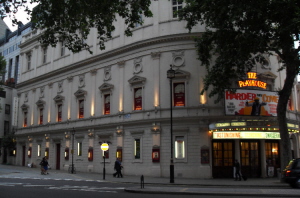 After the band left for a rehearsal and recording session at the Playhouse Theatre for the BBC radio show “Saturday Club,” they then returned to EMI Studio Two for their second session from 5 till 11 pm. After adding overdubs to “Money (That’s What I Want),” completely remaking the previously recorded “Till There Was You” and fully recording and completing another cover tune, Chuck Berry’s “Roll Over Beethoven,” The Beatles finally returned to “It Won’t Be Long” approximately between 8 and 10 pm. After the band left for a rehearsal and recording session at the Playhouse Theatre for the BBC radio show “Saturday Club,” they then returned to EMI Studio Two for their second session from 5 till 11 pm. After adding overdubs to “Money (That’s What I Want),” completely remaking the previously recorded “Till There Was You” and fully recording and completing another cover tune, Chuck Berry’s “Roll Over Beethoven,” The Beatles finally returned to “It Won’t Be Long” approximately between 8 and 10 pm.
 The group started from scratch, recording takes 11 through 17, "take 17" being determined as acceptable up until the end of the second verse. With this in mind, they proceeded to record just the second half of the song with the intention of this being edited together with "take 17" of the first half of the song. The Beatles made six attempts at recording this edit piece, which were designated takes 18 through 23. It was then decided that "take 21" was the best of their edit pieces. Then, both "take 17" of the first half of the song and "take 21" of the second half were apparently individually transferred from the original two-track tape to a second two-track machine so that John could simultaneously double-track his lead vocals onto each tape individually when they were being transferred. Since they wanted to move on to record "All My Loving" before the recording session was due to end at 11 pm, it was decided that the two halves of "It Won't Be Long" would be edited together at a later date. The group started from scratch, recording takes 11 through 17, "take 17" being determined as acceptable up until the end of the second verse. With this in mind, they proceeded to record just the second half of the song with the intention of this being edited together with "take 17" of the first half of the song. The Beatles made six attempts at recording this edit piece, which were designated takes 18 through 23. It was then decided that "take 21" was the best of their edit pieces. Then, both "take 17" of the first half of the song and "take 21" of the second half were apparently individually transferred from the original two-track tape to a second two-track machine so that John could simultaneously double-track his lead vocals onto each tape individually when they were being transferred. Since they wanted to move on to record "All My Loving" before the recording session was due to end at 11 pm, it was decided that the two halves of "It Won't Be Long" would be edited together at a later date.
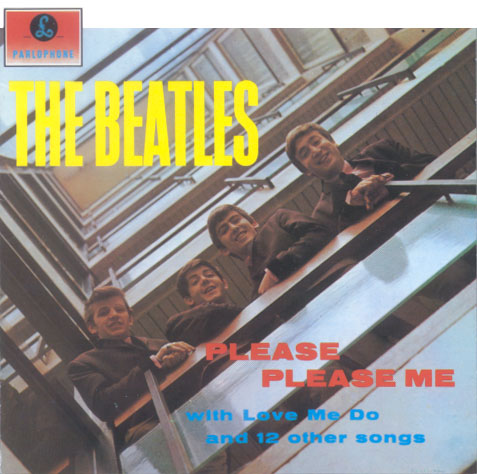 July 30th, 1963 proved itself to be a very productive day for The Beatles. Five of the 14 songs required for their second album “With The Beatles” were completed, as well as most of a sixth song. Ten of the songs on their first British album "Please Please Me" may have been finished in one day, but not with the expanding technical advances and studio tricks, such as the increased amount of vocal overdubbing, that were utilized on "With The Beatles." By 11 pm, the very productive July 30th, 1963 recording session was finally complete. July 30th, 1963 proved itself to be a very productive day for The Beatles. Five of the 14 songs required for their second album “With The Beatles” were completed, as well as most of a sixth song. Ten of the songs on their first British album "Please Please Me" may have been finished in one day, but not with the expanding technical advances and studio tricks, such as the increased amount of vocal overdubbing, that were utilized on "With The Beatles." By 11 pm, the very productive July 30th, 1963 recording session was finally complete.
 August 21st, 1963 was the date designated for preparing mono mixes for eight of the songs designated for "With The Beatles." Only producer George Martin and engineers Norman Smith and Geoff Emerick appear to have been present for these two mixing sessions in the control room of EMI Studio Three, which ran from 10 am to 1 pm and then 2 to 5:30 pm. August 21st, 1963 was the date designated for preparing mono mixes for eight of the songs designated for "With The Beatles." Only producer George Martin and engineers Norman Smith and Geoff Emerick appear to have been present for these two mixing sessions in the control room of EMI Studio Three, which ran from 10 am to 1 pm and then 2 to 5:30 pm.
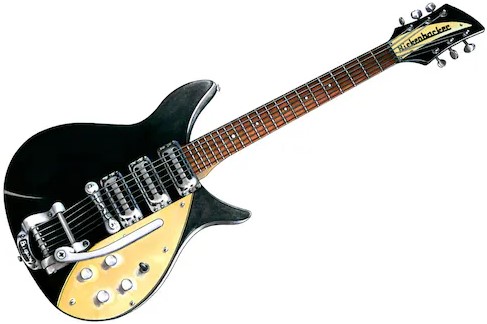 Four of these songs first needed editing, "It Won't Be Long" being one of them. "Take 17" containing the first half of the song and "take 21" containing the second half was edited together, thus creating what Ian MacDonald describes in his book "Revolution In The Head" as "a dreadful edit at 1:08, slicing off an impatient flourish from Lennon's Rickenbacker." A mono mix of this edit was then made, this being the official mono recording released in most countries. Four of these songs first needed editing, "It Won't Be Long" being one of them. "Take 17" containing the first half of the song and "take 21" containing the second half was edited together, thus creating what Ian MacDonald describes in his book "Revolution In The Head" as "a dreadful edit at 1:08, slicing off an impatient flourish from Lennon's Rickenbacker." A mono mix of this edit was then made, this being the official mono recording released in most countries.
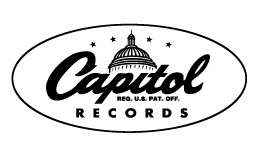 "It Won't Be Long" then received its stereo mix on October 29th, 1963 using the very same edited tape made on August 21st, 1963. This prepared the song for its stereo albums in Britain and America. The same engineers were present in the studio with George Martin on this day, joined by a mysterious engineer known only by the initials "B.T." This stereo mix was used by Capitol Records to create a mono "Type B" mix for the mono edition of the "Meet The Beatles!" album in the US by combining both channels of this stereo mix, a process they used for most of this album instead of using George Martin's superior mono mix created on August 21st, 1963. "It Won't Be Long" then received its stereo mix on October 29th, 1963 using the very same edited tape made on August 21st, 1963. This prepared the song for its stereo albums in Britain and America. The same engineers were present in the studio with George Martin on this day, joined by a mysterious engineer known only by the initials "B.T." This stereo mix was used by Capitol Records to create a mono "Type B" mix for the mono edition of the "Meet The Beatles!" album in the US by combining both channels of this stereo mix, a process they used for most of this album instead of using George Martin's superior mono mix created on August 21st, 1963.
Song Structure and Style
 As stated earlier, the structure of “It Won’t Be Long” is somewhat unusual. The use of a chorus in Lennon / McCartney compositions came to the fore a little later and became a common feature of their songwriting formula as time progressed. Here, though, we have the first time an actual “chorus” appears in a Lennon / McCartney song. The structure consists of a chorus, three verses and a bridge that is repeated twice. The finished song structure is a confusing 'chorus/ verse/ chorus/ bridge/ verse/ chorus/ bridge/ verse/ chorus' (which would result in an abacbacba structure). As stated earlier, the structure of “It Won’t Be Long” is somewhat unusual. The use of a chorus in Lennon / McCartney compositions came to the fore a little later and became a common feature of their songwriting formula as time progressed. Here, though, we have the first time an actual “chorus” appears in a Lennon / McCartney song. The structure consists of a chorus, three verses and a bridge that is repeated twice. The finished song structure is a confusing 'chorus/ verse/ chorus/ bridge/ verse/ chorus/ bridge/ verse/ chorus' (which would result in an abacbacba structure).
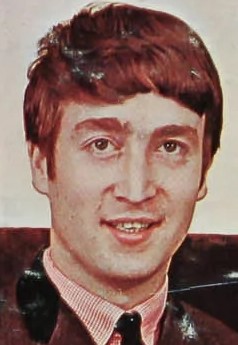 The song starts out with the chorus which begins with a minor chord, although the song is in a major key. But the first thing we hear is Lennon’s overdubbed vocals because the lyric line actually begins three eighth notes before the first measure. Each chorus consists of the common eight measures. The song starts out with the chorus which begins with a minor chord, although the song is in a major key. But the first thing we hear is Lennon’s overdubbed vocals because the lyric line actually begins three eighth notes before the first measure. Each chorus consists of the common eight measures.
 We then go into the first verse of the song which, like all of the other verses, consists of an odd seven measures. Lennon, who habitually liked to omit or add measures (as well as beats per measure) to a song, introduces that habit here. (Notable examples are "Revolution," "Across The Universe," and early versions of "Cry Baby Cry" and "Dig A Pony.") These verses could be evened out to eight measures in the obvious place by adding another measure between the first and second lyric line, but it would have elongated the verses with an awkward pause. Wisely, and no doubt with George Martin’s influence, this idea was dismissed. We then go into the first verse of the song which, like all of the other verses, consists of an odd seven measures. Lennon, who habitually liked to omit or add measures (as well as beats per measure) to a song, introduces that habit here. (Notable examples are "Revolution," "Across The Universe," and early versions of "Cry Baby Cry" and "Dig A Pony.") These verses could be evened out to eight measures in the obvious place by adding another measure between the first and second lyric line, but it would have elongated the verses with an awkward pause. Wisely, and no doubt with George Martin’s influence, this idea was dismissed.
 After the obligatory "Beatles break" in the last bar of the verse (although with George’s guitar line still in place and John’s vocals introducing the chorus), another identical chorus takes place. This time the chorus segues into an eight bar bridge, along with subdued drums and intricate background vocals, to create a textured backdrop to the reflective and then optimistic lyrics. This bridge, with its Miracles’ style of sophistication, serves to relieve the non-stop tension heard thus far in the song. After the obligatory "Beatles break" in the last bar of the verse (although with George’s guitar line still in place and John’s vocals introducing the chorus), another identical chorus takes place. This time the chorus segues into an eight bar bridge, along with subdued drums and intricate background vocals, to create a textured backdrop to the reflective and then optimistic lyrics. This bridge, with its Miracles’ style of sophistication, serves to relieve the non-stop tension heard thus far in the song.
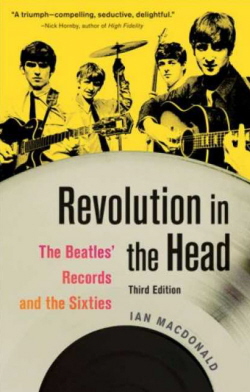 The bridge acts as a natural segue into another verse that is identical in structure, with just Lennon’s double-tracked vocals to the fore. This ends with another break leading into another identical chorus. They then repeat the same bridge/verse/chorus pattern another time, the only differences here being a new set of lyrics in the verse and an unexpected break in the sixth bar of the chorus. The song then resolves in a surprising fashion with its descending guitar chords as a backdrop to the held out final note of Lennon on the word “you.” This climaxes into "one of the group's favourite barber-shop major sevenths," as Ian MacDonald puts it in his book "Revolution In The Head," utilizing the voices of McCartney, Harrison and (slipping into falsetto) John. This melodramatic ending appears to be most appropriate considering their intention of this being a follow up to the similarly concluded “She Loves You.” The bridge acts as a natural segue into another verse that is identical in structure, with just Lennon’s double-tracked vocals to the fore. This ends with another break leading into another identical chorus. They then repeat the same bridge/verse/chorus pattern another time, the only differences here being a new set of lyrics in the verse and an unexpected break in the sixth bar of the chorus. The song then resolves in a surprising fashion with its descending guitar chords as a backdrop to the held out final note of Lennon on the word “you.” This climaxes into "one of the group's favourite barber-shop major sevenths," as Ian MacDonald puts it in his book "Revolution In The Head," utilizing the voices of McCartney, Harrison and (slipping into falsetto) John. This melodramatic ending appears to be most appropriate considering their intention of this being a follow up to the similarly concluded “She Loves You.”
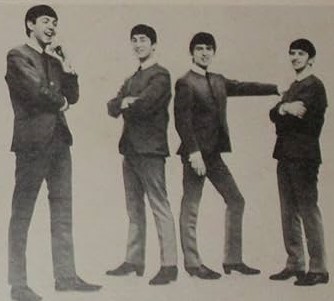 All in all, it can be stated that the arrangement of "It Won't Be Long" grabs the attention of the listener and packs the song with non-stop guts and drive. Their intended philosophy on these early sessions was to pack in as many changes and surprises as possible, especially when the song was slated to be their next single. This never-a-dull-moment atmosphere permeates “It Won’t Be Long,” leaving no doubt as to their intent of the song. All in all, it can be stated that the arrangement of "It Won't Be Long" grabs the attention of the listener and packs the song with non-stop guts and drive. Their intended philosophy on these early sessions was to pack in as many changes and surprises as possible, especially when the song was slated to be their next single. This never-a-dull-moment atmosphere permeates “It Won’t Be Long,” leaving no doubt as to their intent of the song.
 John Lennon is definitely in the forefront with his razor-sharp rhythm guitar and commanding lead vocals. This was the first song that Lennon sang which featured double-tracked lead vocals. It was the perfect vehicle for this, since his vocals were not sung in unison with Paul as were many of the previous songs. This added a deserved fullness to his vocal track, which resulted in a completely confident and convincing vocal performance. “That’s when we discovered double-tracking,” Lennon later stated. “When I discovered it, I double-tracked everything. I wouldn’t let him have anything single-tracked from then on.” Although this was an exaggeration, listeners can’t help but notice how prominent double-tracking of vocals and guitar leads were to become throughout the next couple of years. John Lennon is definitely in the forefront with his razor-sharp rhythm guitar and commanding lead vocals. This was the first song that Lennon sang which featured double-tracked lead vocals. It was the perfect vehicle for this, since his vocals were not sung in unison with Paul as were many of the previous songs. This added a deserved fullness to his vocal track, which resulted in a completely confident and convincing vocal performance. “That’s when we discovered double-tracking,” Lennon later stated. “When I discovered it, I double-tracked everything. I wouldn’t let him have anything single-tracked from then on.” Although this was an exaggeration, listeners can’t help but notice how prominent double-tracking of vocals and guitar leads were to become throughout the next couple of years.
 McCartney’s bass work is slightly pedestrian in comparison with many of his other vibrant contributions to the early Beatles catalog, but with everything else going on, intricate bass lines would surely distract from the elaborate arrangement of the song. Other than mimicking George’s guitar phrase at the end of each verse, Paul pretty much plays the signature chords of the song throughout. McCartney's energetic “yeah” answer harmonies with George in syncopation with John on the choruses, as well as his harmony phrases during the bridges, are Paul’s true highlights in the song. McCartney’s bass work is slightly pedestrian in comparison with many of his other vibrant contributions to the early Beatles catalog, but with everything else going on, intricate bass lines would surely distract from the elaborate arrangement of the song. Other than mimicking George’s guitar phrase at the end of each verse, Paul pretty much plays the signature chords of the song throughout. McCartney's energetic “yeah” answer harmonies with George in syncopation with John on the choruses, as well as his harmony phrases during the bridges, are Paul’s true highlights in the song.
 George Harrison cooperatively adds his repetitive guitar phrases every time a lull in the proceedings occurs, which ends up being twice at the end of almost every chorus and three times in every verse. This calls to mind the original arrangement of “Please Please Me,” where George kept hitting the same guitar passage repetitively, which caused producer Ron Richards to interject, "For Christ's sake, George, just play it in the gaps!" The guitarist apparently learned a valuable trick that day and incorporated it into his performance on “It Won’t Be Long.” Harrison’s harmony work with McCartney in the choruses and bridges of the song stand out for George as a highlight, as well as the classy guitar flourishes that give him the true spotlight at the songs finale. George Harrison cooperatively adds his repetitive guitar phrases every time a lull in the proceedings occurs, which ends up being twice at the end of almost every chorus and three times in every verse. This calls to mind the original arrangement of “Please Please Me,” where George kept hitting the same guitar passage repetitively, which caused producer Ron Richards to interject, "For Christ's sake, George, just play it in the gaps!" The guitarist apparently learned a valuable trick that day and incorporated it into his performance on “It Won’t Be Long.” Harrison’s harmony work with McCartney in the choruses and bridges of the song stand out for George as a highlight, as well as the classy guitar flourishes that give him the true spotlight at the songs finale.
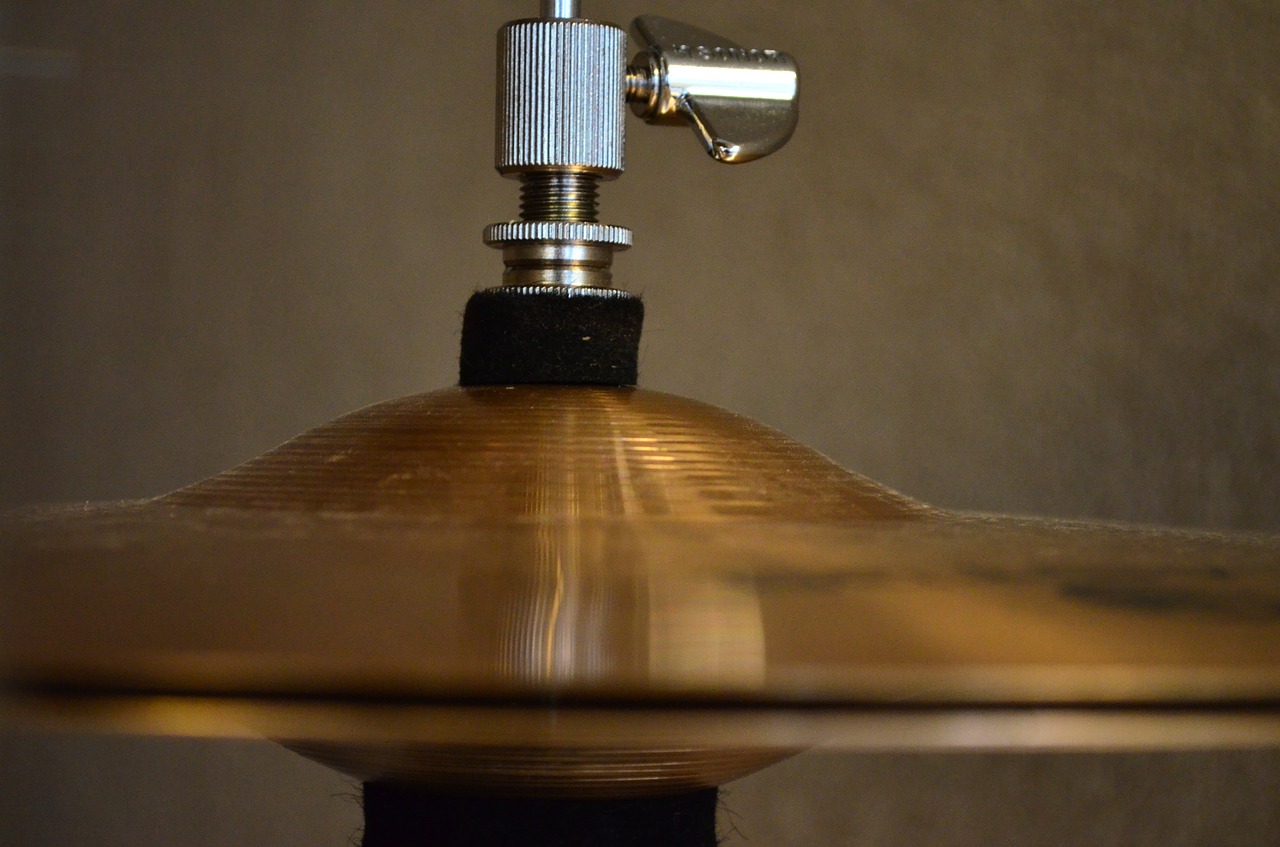 Ringo recaptures the "swing-beat" style of their trademark sound, such as on “I Saw Her Standing There,” although at a slightly slower pace. This allows for the intricate ‘gimmick word-play’ of the chorus to not be at a frantic and unintelligible speed. He is afforded the opportunity to put in a few simple drum fills, such as at the end of most choruses and bridges, while a tight staccato drum fill acts as a ‘band fill’ with Lennon’s 16th note guitar chops at the end of each verse before the break. Ringo makes sure to close his usually open hi-hat during each bridge to ease the tension of the song, which creates a subtle “Miracles” style smoothness. With Starr’s backbeat holding the song together, “It Won’t Be Long” becomes a tightly wound arrangement with hardly a flaw. Ringo recaptures the "swing-beat" style of their trademark sound, such as on “I Saw Her Standing There,” although at a slightly slower pace. This allows for the intricate ‘gimmick word-play’ of the chorus to not be at a frantic and unintelligible speed. He is afforded the opportunity to put in a few simple drum fills, such as at the end of most choruses and bridges, while a tight staccato drum fill acts as a ‘band fill’ with Lennon’s 16th note guitar chops at the end of each verse before the break. Ringo makes sure to close his usually open hi-hat during each bridge to ease the tension of the song, which creates a subtle “Miracles” style smoothness. With Starr’s backbeat holding the song together, “It Won’t Be Long” becomes a tightly wound arrangement with hardly a flaw.
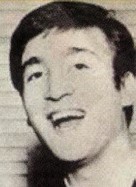 On the surface, the song's lyrics tell a fairly standard tale of anticipation for the return of the singer’s girlfriend. Although McCartney did indeed help somewhat with the words, it can easily be determined that John Lennon’s pen was doing most of the lyric writing in this case. The predominance of sorrow is depicted in the usual Lennon style with lines such as “tears come down from my eyes,” “sitting all on my own” and “I’ve done nothing but cry.” In addition, he imagines that “everybody has fun” while he sits alone in anguish. On the surface, the song's lyrics tell a fairly standard tale of anticipation for the return of the singer’s girlfriend. Although McCartney did indeed help somewhat with the words, it can easily be determined that John Lennon’s pen was doing most of the lyric writing in this case. The predominance of sorrow is depicted in the usual Lennon style with lines such as “tears come down from my eyes,” “sitting all on my own” and “I’ve done nothing but cry.” In addition, he imagines that “everybody has fun” while he sits alone in anguish.
 Most writers conclude that this anguish is the result of his tragic upbringing, losing both his father (by abandonment) and his mother (by death) early in life. He actually felt this loss three times because of his mother giving him over to be raised by his Aunt Mimi at a young age and then by her actual death many years later. “I lost my mother twice,” Lennon had said, “Once as a child of five and then again at 17.” Most writers conclude that this anguish is the result of his tragic upbringing, losing both his father (by abandonment) and his mother (by death) early in life. He actually felt this loss three times because of his mother giving him over to be raised by his Aunt Mimi at a young age and then by her actual death many years later. “I lost my mother twice,” Lennon had said, “Once as a child of five and then again at 17.”
.jpg) Thelma Pickles (later McGough) who dated John shortly after his mother’s death, has stated that “rejection and betrayal were his experience of life” adding that “John’s life was very isolated. He lived with Mimi who looked after him extremely well but there was no closeness.” Although the rough and sarcastic exterior were what was seen by most people who knew him, the inner turmoil that was his life came through in his lyric writing throughout his entire career. That being the case, even in this optimistic song about a returning love, the predominant focus of the lyrics is on the sadness he was experiencing while she was gone. Thelma Pickles (later McGough) who dated John shortly after his mother’s death, has stated that “rejection and betrayal were his experience of life” adding that “John’s life was very isolated. He lived with Mimi who looked after him extremely well but there was no closeness.” Although the rough and sarcastic exterior were what was seen by most people who knew him, the inner turmoil that was his life came through in his lyric writing throughout his entire career. That being the case, even in this optimistic song about a returning love, the predominant focus of the lyrics is on the sadness he was experiencing while she was gone.
 A subtle fault can be found in the aforementioned lines being heard in the verse, while the same melody line and chord structure of the final verse depicts happiness, with lines like “we’ll be happy I know.” A more common and acceptable practice would have a chord pattern and melody line with a reflective, moody minor key for portraying sad lyrics and an excited major key for the optimistic positive lyrics. While this conveys a slightly unconvincing message as is, it doesn’t spoil the overall effect of the song. This is especially so with the dynamically jubilant last phrase “till I belong to you” which is sung with great emphasis and glee, making the listener want to high-five Lennon in congratulations. A subtle fault can be found in the aforementioned lines being heard in the verse, while the same melody line and chord structure of the final verse depicts happiness, with lines like “we’ll be happy I know.” A more common and acceptable practice would have a chord pattern and melody line with a reflective, moody minor key for portraying sad lyrics and an excited major key for the optimistic positive lyrics. While this conveys a slightly unconvincing message as is, it doesn’t spoil the overall effect of the song. This is especially so with the dynamically jubilant last phrase “till I belong to you” which is sung with great emphasis and glee, making the listener want to high-five Lennon in congratulations.
 An interesting side note is the obvious influence of Arthur Alexander, which can easily be detected in John’s singing style for this song. The line “you won’t leave me no mo,” which is also heard in The Beatles' rendition of Arthur Alexander’s “Anna” on their first album, is a direct result of a flattering imitation of one of Lennon’s favorite singers of that time. Direct evidence that the line was written into the song with that pronunciation in mind can be seen in that the line rhymes with “we’ll be happy I know.” Lennon purposely wanted to imitate Arthur Alexander in this song! An interesting side note is the obvious influence of Arthur Alexander, which can easily be detected in John’s singing style for this song. The line “you won’t leave me no mo,” which is also heard in The Beatles' rendition of Arthur Alexander’s “Anna” on their first album, is a direct result of a flattering imitation of one of Lennon’s favorite singers of that time. Direct evidence that the line was written into the song with that pronunciation in mind can be seen in that the line rhymes with “we’ll be happy I know.” Lennon purposely wanted to imitate Arthur Alexander in this song!
 Capitol's "Meet The Beatles" album
|
American Releases
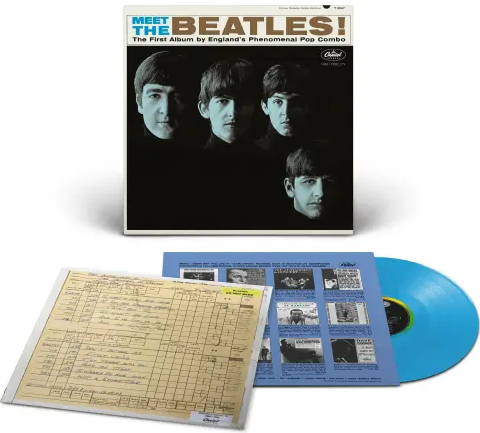 The official release of “It Won’t Be Long” in the US was on January 20th, 1964 on the historic album “Meet The Beatles!” This album was released on compact disc on January 21st, 2014, both the stereo and mono mixes being contained on a single CD. A mono edition of the album on opaque blue vinyl was then released on November 22nd, 2024 for sale exclusively at Target stores. Since the song was never released as a single in either Britain or America and it received minimal exposure by The Beatles themselves, it forever remained an essential but often forgotten album track. Therefore it never appeared on any compilation or "greatest hits" package throughout the years. Nonetheless, the song did wind up in the homes of millions of Americans as the band had hoped, although this was as a cut on their first Capitol album. The official release of “It Won’t Be Long” in the US was on January 20th, 1964 on the historic album “Meet The Beatles!” This album was released on compact disc on January 21st, 2014, both the stereo and mono mixes being contained on a single CD. A mono edition of the album on opaque blue vinyl was then released on November 22nd, 2024 for sale exclusively at Target stores. Since the song was never released as a single in either Britain or America and it received minimal exposure by The Beatles themselves, it forever remained an essential but often forgotten album track. Therefore it never appeared on any compilation or "greatest hits" package throughout the years. Nonetheless, the song did wind up in the homes of millions of Americans as the band had hoped, although this was as a cut on their first Capitol album.
 There were actually three other releases of the song in the early months of 1964, although these releases are quite the collector's items today. The first was released in January of 1964 as part of a Compact 33 EP Disc (#SXA 2047) as intended for jukebox play. This EP, entitled “Meet The Beatles,” came with the standard album cover but in the size of a 7” record. This cover was intended to be displayed in the jukebox window. The disc contained non-single tracks since the jukebox already contained the latest Beatles singles anyway. “It Won’t Be Long” was put in the flattering position of first song on side one. There were actually three other releases of the song in the early months of 1964, although these releases are quite the collector's items today. The first was released in January of 1964 as part of a Compact 33 EP Disc (#SXA 2047) as intended for jukebox play. This EP, entitled “Meet The Beatles,” came with the standard album cover but in the size of a 7” record. This cover was intended to be displayed in the jukebox window. The disc contained non-single tracks since the jukebox already contained the latest Beatles singles anyway. “It Won’t Be Long” was put in the flattering position of first song on side one.
 Then, in February of 1964, Capitol issued and sent out to American disc jockeys the first of two interview discs as part of their Beatles promotional campaign. Side one of the disc, which was entitled “The Beatles Open-End Interview” (#PRO 2549), contained recorded statements by The Beatles with gaps of silence in which the disc jockey could read the questions that were printed on the back of the record sleeve. When done correctly, the illusion of a personal interview with the group was created. After the ‘interview’ was completed, the disc would go into their latest single “I Want To Hold Your Hand.” In order to promote more tracks from the album, side two contained two songs Capitol felt would work well on the radio. The second of these was “It Won’t Be Long.” Then, in February of 1964, Capitol issued and sent out to American disc jockeys the first of two interview discs as part of their Beatles promotional campaign. Side one of the disc, which was entitled “The Beatles Open-End Interview” (#PRO 2549), contained recorded statements by The Beatles with gaps of silence in which the disc jockey could read the questions that were printed on the back of the record sleeve. When done correctly, the illusion of a personal interview with the group was created. After the ‘interview’ was completed, the disc would go into their latest single “I Want To Hold Your Hand.” In order to promote more tracks from the album, side two contained two songs Capitol felt would work well on the radio. The second of these was “It Won’t Be Long.”
 Also, in February of 1964, Capitol released a promotional album entitled “Great New Releases From The Sound Capitol Of The World.” This disc, which comprised assorted Capitol artists, was sent to radio stations in an effort to get them to play a complete side of the album on the air. “It Won’t Be Long” was included on side two of the album, which also featured pop singer Wayne Newton, Wanda Jackson and comedians Len Weinrib and Joyce Jameson. Although it is quite unlikely that radio stations would have programmed this entire side on the air at one time, this album nonetheless constitutes a release of the song on disc. Also, in February of 1964, Capitol released a promotional album entitled “Great New Releases From The Sound Capitol Of The World.” This disc, which comprised assorted Capitol artists, was sent to radio stations in an effort to get them to play a complete side of the album on the air. “It Won’t Be Long” was included on side two of the album, which also featured pop singer Wayne Newton, Wanda Jackson and comedians Len Weinrib and Joyce Jameson. Although it is quite unlikely that radio stations would have programmed this entire side on the air at one time, this album nonetheless constitutes a release of the song on disc.
 Sometime in 1967, Capitol released Beatles music on a brand new but short-lived format called "Playtapes." These tape cartidges did not have the capability to include entire albums, so two truncated four-song versions of "Meet The Beatles" were released in this portable format, "It Won't Be Long" being on one of these releases. These "Playtapes" are highly collectable today. Sometime in 1967, Capitol released Beatles music on a brand new but short-lived format called "Playtapes." These tape cartidges did not have the capability to include entire albums, so two truncated four-song versions of "Meet The Beatles" were released in this portable format, "It Won't Be Long" being on one of these releases. These "Playtapes" are highly collectable today.
 The first time the original British "With The Beatles" album was made available in the US was the "Original Master Recording" vinyl edition released through Mobile Fidelity Sound Lab in January of 1987. This album included "It Won't Be Long" and was prepared utilizing half-speed mastering technology from the original master tape on loan from EMI. This title had a limited production, reportedly because of a damaged metal part that was needed for pressing the vinyl. Therefore, this album is said to be the rarest and most valuable Beatles album in the “Original Master Recording” series. The first time the original British "With The Beatles" album was made available in the US was the "Original Master Recording" vinyl edition released through Mobile Fidelity Sound Lab in January of 1987. This album included "It Won't Be Long" and was prepared utilizing half-speed mastering technology from the original master tape on loan from EMI. This title had a limited production, reportedly because of a damaged metal part that was needed for pressing the vinyl. Therefore, this album is said to be the rarest and most valuable Beatles album in the “Original Master Recording” series.
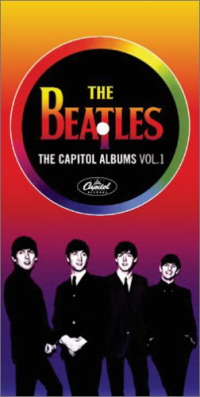 On February 26th, 1987, the first four UK Beatles albums, including "With The Beatles" that featured "It Won't Be Long," were first released in the US in the compact disc format, a vinyl edition being released on July 21st, 1987. The album was available only in mono until September 9th, 2009 when the remastered stereo CD version was released, the stereo vinyl edition coming out on November 13th, 2012. On February 26th, 1987, the first four UK Beatles albums, including "With The Beatles" that featured "It Won't Be Long," were first released in the US in the compact disc format, a vinyl edition being released on July 21st, 1987. The album was available only in mono until September 9th, 2009 when the remastered stereo CD version was released, the stereo vinyl edition coming out on November 13th, 2012.
The CD box set “The Capitol Albums, Vol. 1,” which features the original "Meet The Beatles!" album in stereo and "Type B" foldover mono as originally featured, was released on November 26th, 2004.
September 9th, 2009 was the release date for the CD box set “The Beatles In Mono,” which featured a remastered mono mix of “It Won’t Be Long” on its “With The Beatles” disc. The vinyl edition of this new box set first came out on September 9th, 2014.
Live Performances
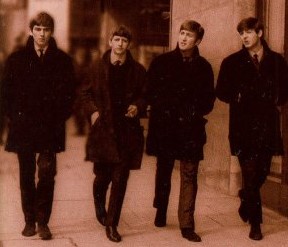 Since the song did not get a single release in the UK or US, The Beatles apparently viewed it as somewhat of a failure at the time and focused on their recent hits and favorite album tracks for their live shows. Therefore, “It Won’t Be Long” was never in their live set list. Nor was it ever performed for any BBC radio performances. Since the song did not get a single release in the UK or US, The Beatles apparently viewed it as somewhat of a failure at the time and focused on their recent hits and favorite album tracks for their live shows. Therefore, “It Won’t Be Long” was never in their live set list. Nor was it ever performed for any BBC radio performances.
 The intricate arrangement used on the song may have been a deterrent to them performing the song live, as can be seen by their lip-synced performance of the song on the March 20th, 1964 episode of the British TV show “Ready Steady Go.” The group flubs their way through the song as if they hadn’t rehearsed it since they recorded it back in July of the previous year. Especially embarrassing (and entertaining) is Lennon’s inability to remember the lyrics, as well as his not being able to get the 'call and response' vocals right at the beginning of the song. With all this and his goofy dance steps at the end of the song, it leaves the cameramen scrambling to focus on the other Beatles as well as the dancers surrounding the stage. The intricate arrangement used on the song may have been a deterrent to them performing the song live, as can be seen by their lip-synced performance of the song on the March 20th, 1964 episode of the British TV show “Ready Steady Go.” The group flubs their way through the song as if they hadn’t rehearsed it since they recorded it back in July of the previous year. Especially embarrassing (and entertaining) is Lennon’s inability to remember the lyrics, as well as his not being able to get the 'call and response' vocals right at the beginning of the song. With all this and his goofy dance steps at the end of the song, it leaves the cameramen scrambling to focus on the other Beatles as well as the dancers surrounding the stage.
Conclusion
 It was becoming apparent with the first two US album releases that John Lennon was asserting himself as the more predominant lead singer of the group. This trend would only increase as the following four album releases of 1964 would show. Whether as a lead singer or as a songwriter, Lennon was determined to make his mark as the undisputed and natural leader of the group. Even the other members of The Beatles would testify at this time that John was their leader. It was becoming apparent with the first two US album releases that John Lennon was asserting himself as the more predominant lead singer of the group. This trend would only increase as the following four album releases of 1964 would show. Whether as a lead singer or as a songwriter, Lennon was determined to make his mark as the undisputed and natural leader of the group. Even the other members of The Beatles would testify at this time that John was their leader.
 “It Won’t Be Long” was one of many evidences of this fact, being that Lennon was the predominant writer and singer of the majority of the songs on the “Meet The Beatles!” album. McCartney’s secondary role appeared to continue until the latter half of 1965 when the confidence builder “Yesterday” became an entry on his resume. Lennon would thereafter gradually lose interest in the ego-driven dominance he once sought, handing over the reins to Paul as the chief songwriter and even as the unstated ‘leader’ of the group. “It Won’t Be Long” was one of many evidences of this fact, being that Lennon was the predominant writer and singer of the majority of the songs on the “Meet The Beatles!” album. McCartney’s secondary role appeared to continue until the latter half of 1965 when the confidence builder “Yesterday” became an entry on his resume. Lennon would thereafter gradually lose interest in the ego-driven dominance he once sought, handing over the reins to Paul as the chief songwriter and even as the unstated ‘leader’ of the group.
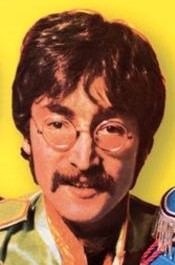 Both John and Paul have been known to refer to their early songs with negative phrases such as a “knock off” or a “work job” in comparison to their later efforts. And as Lennon lost a degree of interest in asserting himself as a songwriter in certain later periods of The Beatles' career, one can conclude that his most prolific years were with the “work job” songs of the 1963-65 period. Both John and Paul have been known to refer to their early songs with negative phrases such as a “knock off” or a “work job” in comparison to their later efforts. And as Lennon lost a degree of interest in asserting himself as a songwriter in certain later periods of The Beatles' career, one can conclude that his most prolific years were with the “work job” songs of the 1963-65 period.
 That being said, time has told us that The Beatles music of those early years have been the most enduring and heart-warming memories of The Beatles generation. “It Won’t Be Long,” for example, never fails to light up the faces of audiences at Beatles tribute band performances. All of these "work job" songs were written with audiences in mind, which became less and less of a priority as their career progressed. That being said, time has told us that The Beatles music of those early years have been the most enduring and heart-warming memories of The Beatles generation. “It Won’t Be Long,” for example, never fails to light up the faces of audiences at Beatles tribute band performances. All of these "work job" songs were written with audiences in mind, which became less and less of a priority as their career progressed.
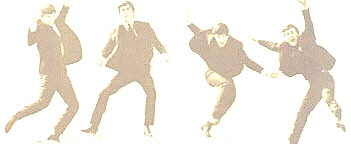 In conclusion, it can be stated as fact that the Lennon / McCartney team, predominantly John Lennon, made the Beatlemania of 1964 what it is today. Lennon’s assertiveness set the benchmark and then he passed it on to Paul McCartney in later years to solidify their genius. The overwhelming charm found in “It Won’t Be Long” is but a small piece of the big picture that began the chain of events that moved the world to fall in love with the music of The Beatles. In conclusion, it can be stated as fact that the Lennon / McCartney team, predominantly John Lennon, made the Beatlemania of 1964 what it is today. Lennon’s assertiveness set the benchmark and then he passed it on to Paul McCartney in later years to solidify their genius. The overwhelming charm found in “It Won’t Be Long” is but a small piece of the big picture that began the chain of events that moved the world to fall in love with the music of The Beatles.
Song Summary
"It Won’t Be Long”
Written by: John Lennon / Paul McCartney
- Song Written: July 1963
- Song Recorded: July 30, 1963
- First US Release Date: January 20, 1964
- First US Album Release: Capitol #ST-2047 “Meet The Beatles!”
- US Single Release: Capitol #SXA 2047 (Meet The Beatles Jukebox EP)
- Highest Chart Position: n/a
- British Album Release: Parlophone #PCS 3045 “With The Beatles”
- Length: 2:13
- Key: E major
- Producer: George Martin
- Engineers: Norman Smith, Richard Langham
Instrumentation (most likely):
- John Lennon – Lead Vocals, Rhythm Guitar (1958 Rickenbacker 325)
- Paul McCartney - Bass Guitar (1961 Hofner 500/1), Harmony Vocals
- George Harrison – Lead Guitar (1962 Gretsch 6122 Country Gentleman), Harmony Vocals
- Ringo Starr – Drums (1963 Ludwig Downbeat Black Oyster Pearl)
Written and compiled by Dave Rybaczewski
|
IF YOU WOULD LIKE TO MAKE A DONATION TO KEEP THIS WEBSITE UP AND RUNNING, PLEASE CLICK BELOW!
Sign Up Below for our MONTHLY BEATLES TRIVIA QUIZ!
|